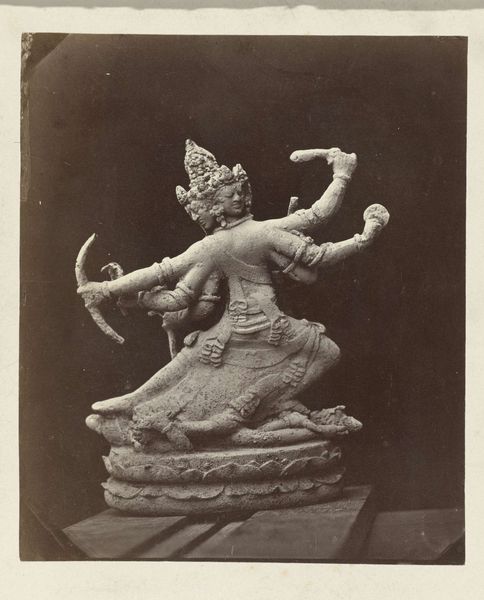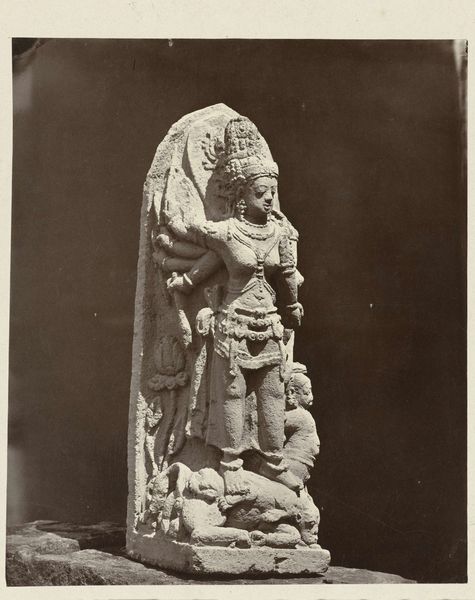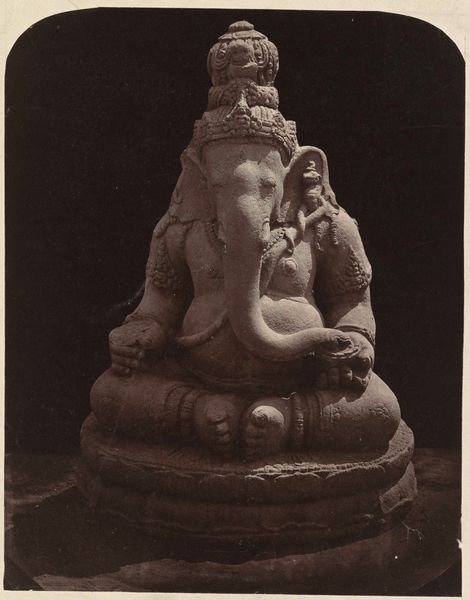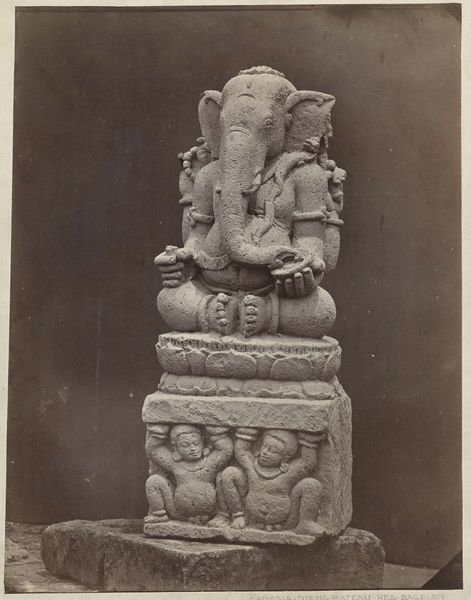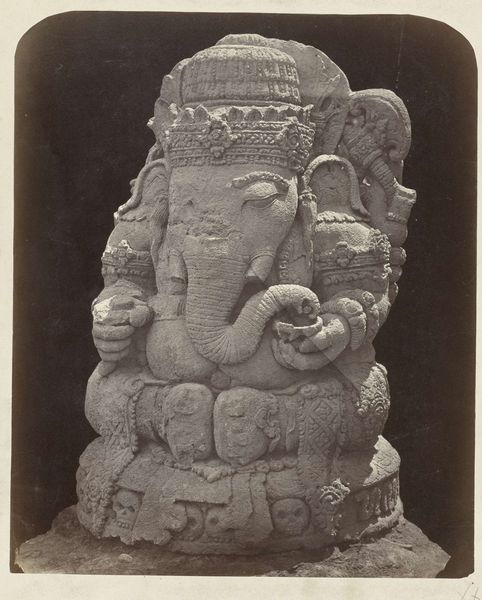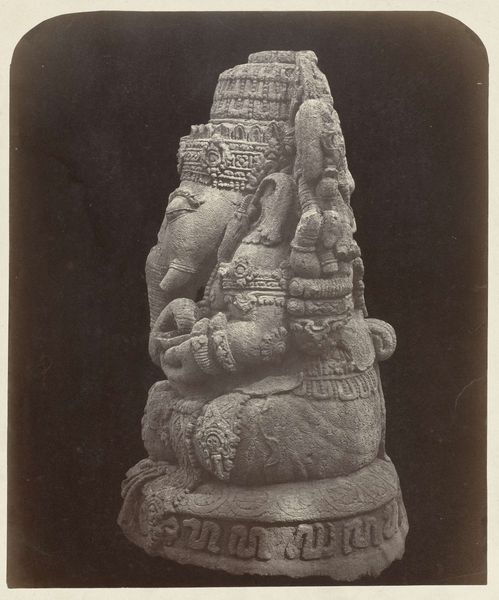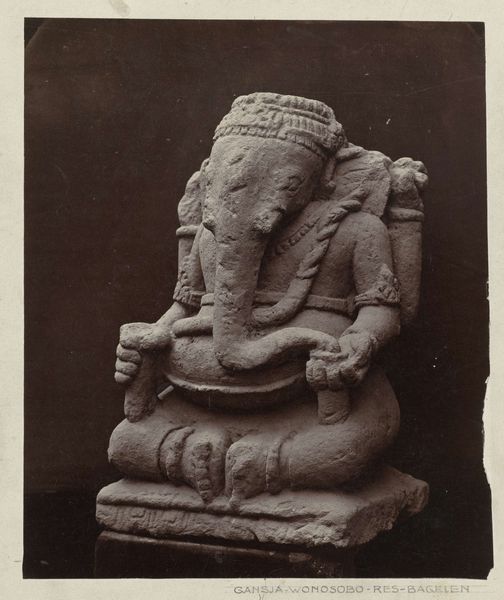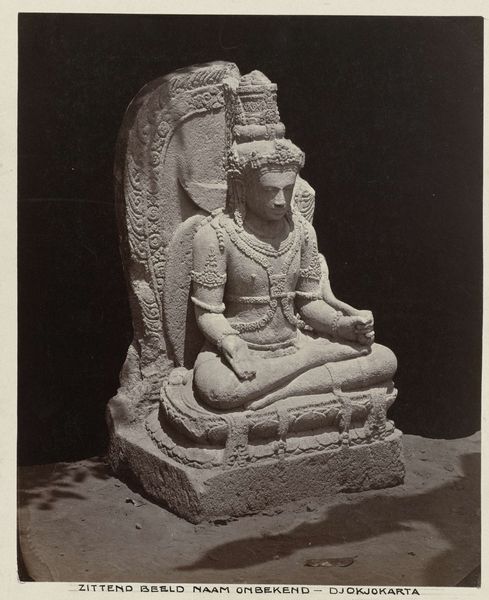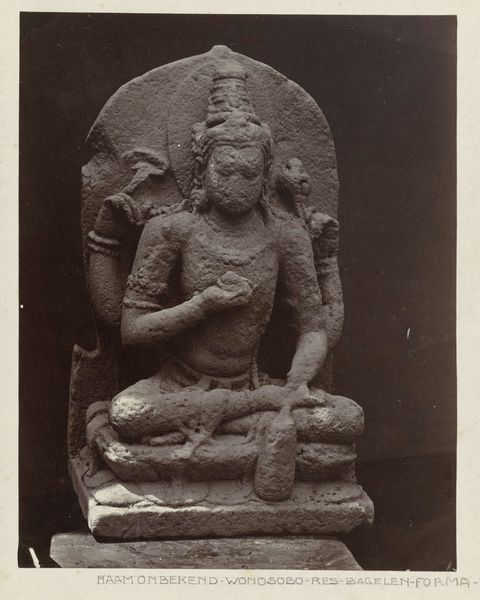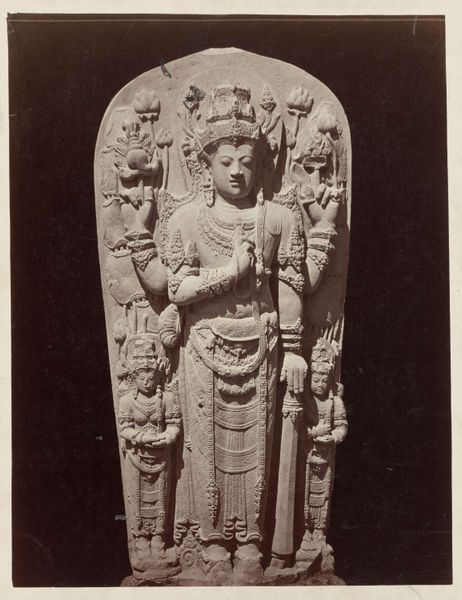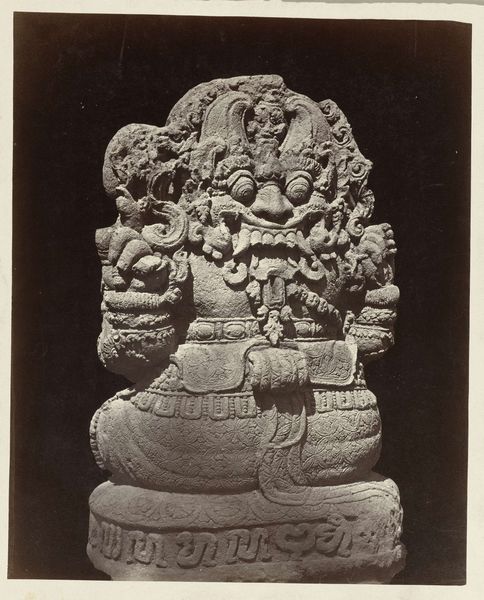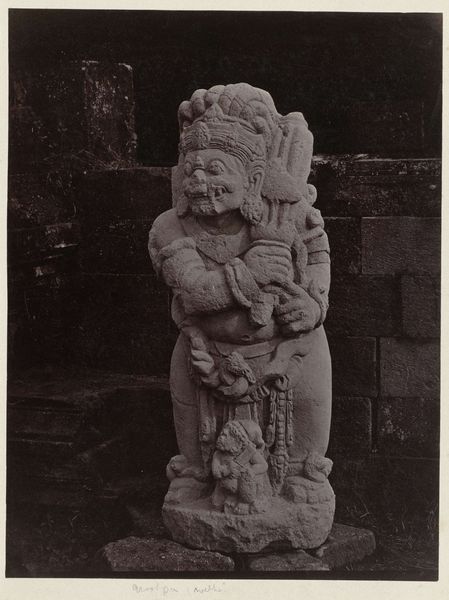
Djokjokarta (Klaring) (r. Djokjokarta) Eight-armed bronze Trailokyavijaya dashing a corpse (Former Klaring collection). Yogyakarta, Yogyakarta district, D.I. Yogyakarta province, 9th-10th century. Possibly 1865 - 1867
0:00
0:00
bronze, photography, sculpture
#
asian-art
#
bronze
#
figuration
#
photography
#
ancient-mediterranean
#
sculpture
Dimensions: height 210 mm, width 170 mm
Copyright: Rijks Museum: Open Domain
This photograph captures a bronze statue of Trailokyavijaya, made in Yogyakarta between the 9th and 10th centuries. Here, the deity is depicted with eight arms, a bow, and a corpse, each element laden with symbolic weight. The multiple arms signify divine power, a motif echoing across cultures from ancient Hindu deities to classical depictions of titans. Note how Trailokyavijaya tramples a corpse, symbolizing the triumph over ignorance and death. This motif resonates with ancient sacrificial rituals, where the vanquishing of a victim signifies the overcoming of chaos. The image of a vanquished foe, prevalent in ancient Greek sculptures of battling heroes and centaurs, speaks to a deeper, universal yearning to conquer mortality. Ultimately, this is more than religious iconography. It's a window into the cyclical nature of symbols, their continuous adaptation across time, mirroring our collective unconscious and its unyielding quest for meaning and control.
Comments
No comments
Be the first to comment and join the conversation on the ultimate creative platform.
